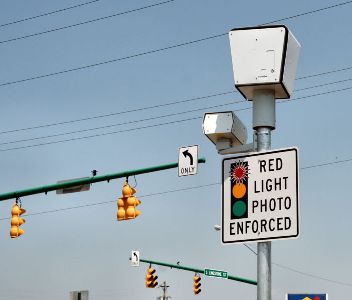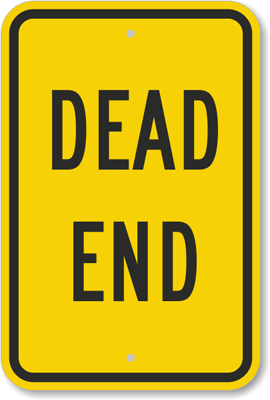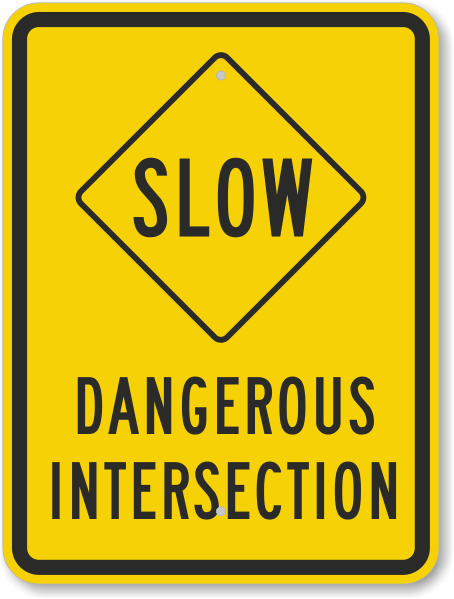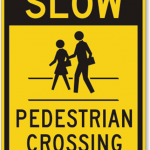The Red Light Camera Program Controversy: How Prevention Methods May Break an Impasse
Red-light cameras are an enforcement tool against red-light runners (image via Southdacola).
July 20, 2012 — The controversial Red Light Camera Program, which records drivers stopped at red lights, has reached national attention from California and Texas to Florida and New York. In each case, municipalities are fiercely debating the merits of the program to determine whether or not the enforcement tool actually reduces red-light running and traffic accidents or if it’s just an unfair revenue generator.
Is controversy stalling the program at a dead end?
The red-light program works as follows: a camera is perched on top of traffic lights at intersections and snaps photographs of vehicles’ license plates whenever they run through a red light. Then, the photo is reviewed by the camera company and police to determine if a violation actually took place, after which a summons, along with the photo, is sent to the violator. The cameras are currently in use in hundred of cities across the nation.
Proponents of the program argue that the camera deters violators and reduces accidents at intersections. Plus, the camera reduces the need for police manpower, thus diverting enforcement to other much-needed areas. Yet, detractors argue that the tool is just a gimmick for municipalities to generate revenue. Also, the camera causes more harm than good because the flash may distract or blind drivers. Both sides dispute each other’s statistics but the general conclusion is that supporters believe that side-impact accidents have decreased while opponents counter that rear-end collisions have increased with the use of red light cameras.
A different prevention measure: signs like these have drivers slowing down before they get to the intersection, not after .
The argument has progressed from the program’s merits to its constitutionality: in fact, both Missouri and Florida struck down the cameras as unconstitutional. More recently, a class action lawsuit against the program is developing in New Mexico’s federal courts, on the premise that the program violates the accused’s 14th amendment due process rights, namely, the right to face the accuser in court—in this case, the camera. Plus, the contestant argues, the program violates a person’s 5th amendment right against self-incrimination, as the vehicle’s owner is required to respond to the summons with a confirmation that he/she was driving the car at the time of violation.
As the battle continues to rage in the enforcement sector, others are looking away from enforcement and toward prevention measures. Some motorists argue that the duration of the yellow light should be extended, as the light simply does not last long enough. Another alternative would be to install countdowns adjacent to the signals, akin to pedestrian crosswalk signals. These advocates point out that red-light runners are either inattentive or drunk, and will continue to run red lights despite cameras. Therefore, the solution lies not in enforcement, but in prevention, via education and awareness programs or “slow down” signs before intersections. These methods are not only cheap, but also much less controversial than the Red Light Camera Program.
– N. Gilliat
Related Posts
Category: News, Regulations




















